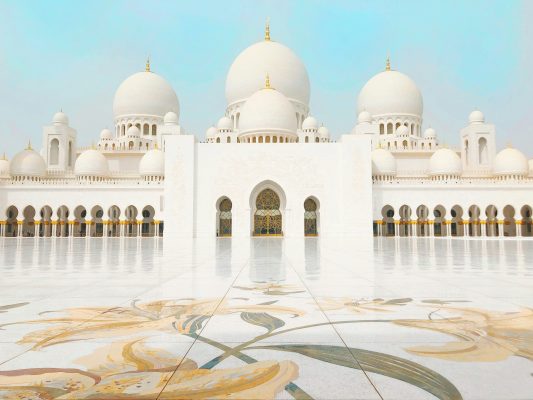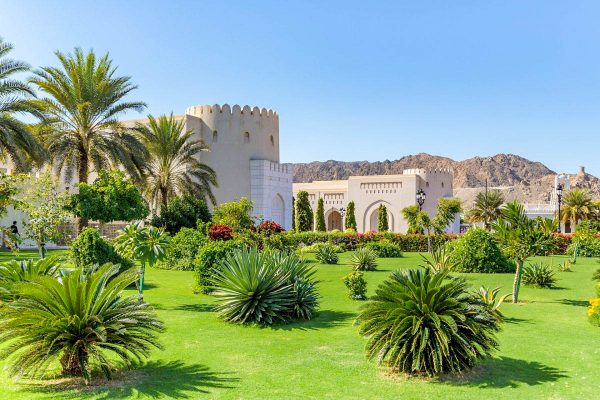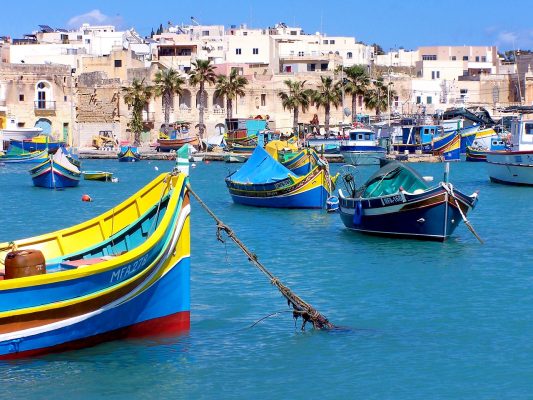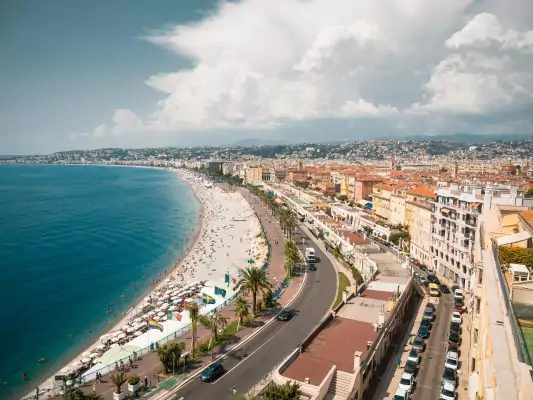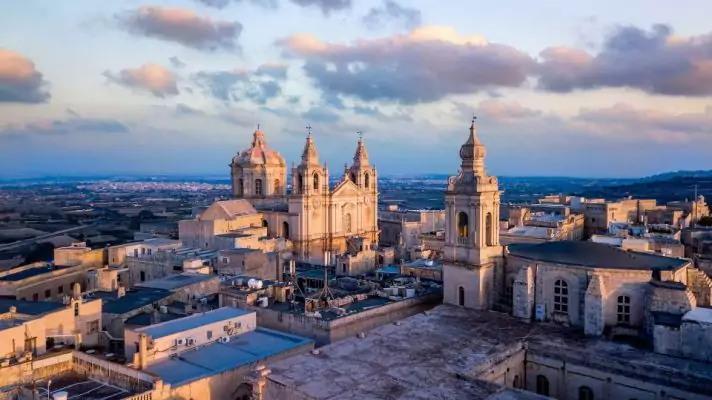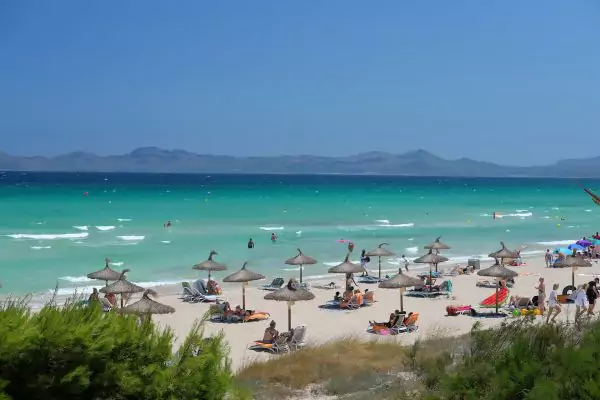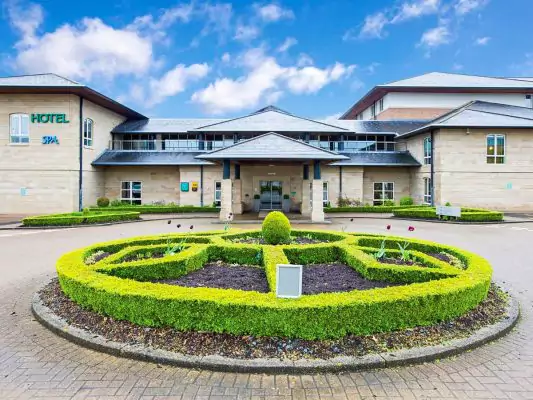Marrakesh 3-Day Travel Guide – What to See and Do in the Red City

Have a look at our Marrakesh 3-day travel guide and discover the best the city has to offer, including hotels, restaurants, tips to avoid tourist scams and even a detailed list with everything you must see and do in Marrakesh in 3 days.
Purposely built to serve as the imperial capital, at the crossroads of a number of important merchant routes, Marrakesh has become an iconic trade hub, a status the city has retained to this day. Famous for its sprawling and bustling Medina, where shops, stalls and riads converge in an orchestrated chaos, Marrakesh stands out as the top tourist destination in all of Morocco and one of the most illustrious cities across the Maghreb region.
A true festival of incessant noise and constant commotion, its old streets are typically lined with ancient clay buildings. Because of its uniform reddish hues, Marrakesh has earned the moniker of the “Red City”. Alongside the enchanting Medina, the city’s imperial palaces, historic mosques and endless maze-like souqs have helped turn Marrakesh into an exciting destination, ideal for those seeking an exotic getaway. After all, it’s not every day that you get to spend the weekend at a place that perfectly mashes Arab and Berber cultures!
That being said, we invite you to have a look at our Marrakesh 3-day travel guide and discover the best the city has to offer, including hotels, restaurants, tips to avoid tourist scams and even a detailed list with everything you must see and do in Marrakesh in 3 days.
Marrakesh 3-Day Travel Guide

How to get to Marrakesh – Flights from the UK
Considering this is the biggest tourist destination in all of Morocco, it comes as no surprise that the city is served by a busy international air hub: the Marrakesh Menara Airport.
As such, if you’re traveling from the UK, it is possible to fly directly to Sofia from London-Heathrow (British Airways), London-Gatwick (British Airways, Easyjet, TUI and Wizz Air), London-Stansted (Ryanair and Jet2), London-Luton (Easyjet), Manchester (Easyjet, Ryanair, TUI and Jet2), Bristol (Easyjet, Ryanair and TUI), Birmingham (Jet2, Ryanair and TUI), Leeds/Bradford (Ryanair), Edinburgh (Ryanair) and Glasgow (Jet2).
How many days do I need to visit Marrakesh?
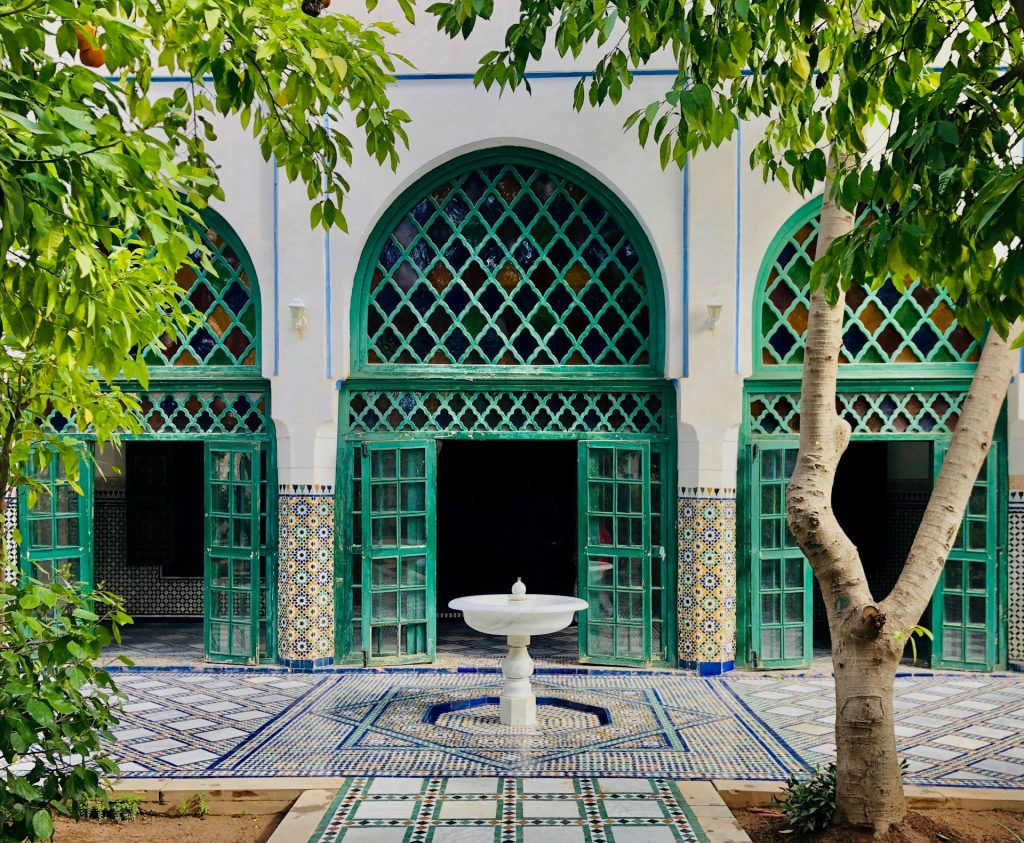
While the highlights of Marrakesh can be comfortably explored in just 2 days, it’s highly recommended to add an extra day for the “mandatory” visit to the nearby desert (or any of the other amazing day trips from the Red City).
Moreover, and since you’ll be flying into a different continent altogether, it might be worth extending your stay and exploring other gems of Morocco, such as the Atlas Mountains and the Sahara Desert, the imperial cities of Fez and Meknes, the Instagram-sensation “Blue City” of Chefchaouen, the ancient kasbah of Aït Ben Haddou, the coastal resorts of Essaouira and Agadir or the capital of Rabat.
Marrakesh 3-day travel guide – Best time to visit the city

While the Atlas Mountains might shield Marrakesh from the harshest arid climate of the Sahara Desert, they still don’t prevent temperatures from reaching close to 40°C during the Summer. Therefore, the best time to visit the city is during shoulder-season, especially in the months of April-May or September-October, when the scorching heat is not as intense. As for the chances of rain, they’re not really an issue regardless of the time of year.
On the other hand, the winter months are slightly more humid and colder, though the weather will still be more pleasant than what you might be used to in mainland Europe.
Documents needed for your trip to Marrakesh
In order to enter Morocco, British and Irish travelers need to show their passport. The document should be valid for a minimum period of 6 months from the date of entry into the country.
Finally, it’s worth mentioning that passport holders from the UK/Ireland can stay in Morocco without a visa for up to 90 days.
Marrakesh 3-day Travel Guide – Internet and SIM Cards
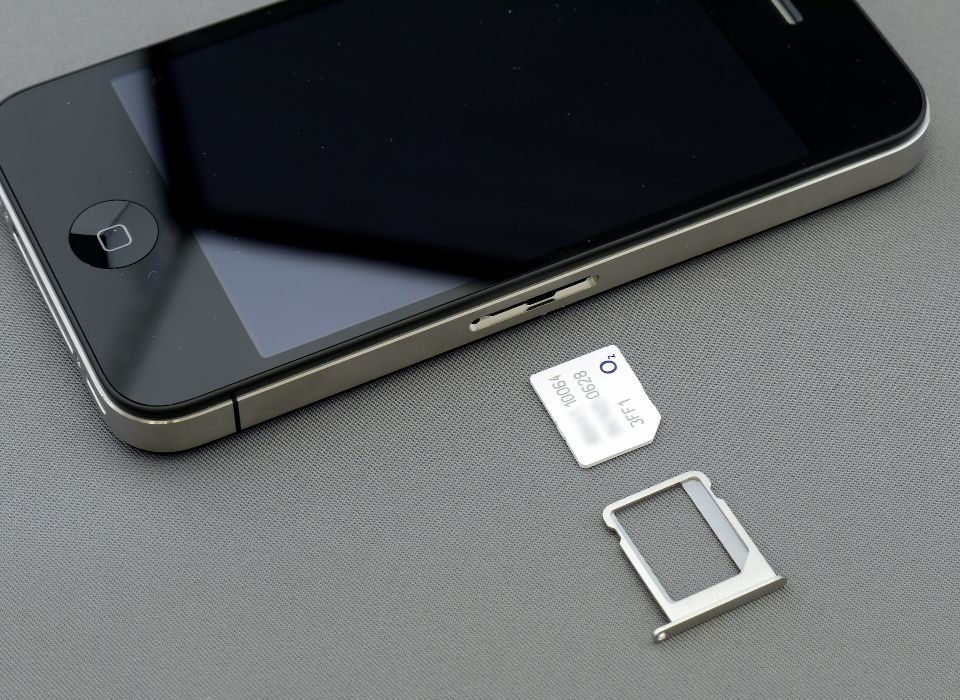
Since there is no special agreement in place between the UK and Morocco regarding international communications and roaming fees, using your regular phone plan is a big no-no!
Therefore, our recommendation is that you either get an Esim before leaving the homeland or buy a physical SIM card in your destination (you can do so as soon as you land at the airport). In Morocco, there are 3 big companies that pretty much run the mobile data market: INWI, Orange and Maroc Telecom. While the clerks will probably try to sell you a pre-paid data plan, you can simply buy a standard SIM card and then top it up as you see fit. Every recharge will give you access to a specific amount of data, which will turn out cheaper than buying a whole plan. You can top up your SIM card at official shops, groceries stores and kiosks, or you may simply use the official network app (regardless of which one you choose). However, keep in mind the process is a bit more convoluted than simply getting a pre-paid plan, since you’ll have to write down a specific code for each data bundle you wish to buy with your recharge. Still, any store clerk can easily help you out with that!
Marrakesh 3-day travel guide – INWI SIM Card
- SIM Card price: 50 Dh
- Top ups:
- 5 GB: 50 Dh (30 days)
- 10 GB: 100 Dh (30 days)
- 20 GB: 200 Dh (30 days)
Marrakesh 3-day travel guide – Orange SIM Card
- SIM Card price: 30 Dh
- Top ups:
- 6 GB: 30 Dh (14 days)
- 10 GB: 50 Dh (30 days)
- 20 GB: 100 Dh (30 days)
Marrakesh 3-day travel guide – Maroc Telecom SIM Card
- SIM Card price: 30 Dh
- Top ups:
- 5 GB: 50 Dh (30 days)
- 10 GB: 100 Dh (30 days)
- 20 GB: 200 Dh (30 days)
Marrakesh 3-day travel guide – Withdrawals, banking fees and travel budget
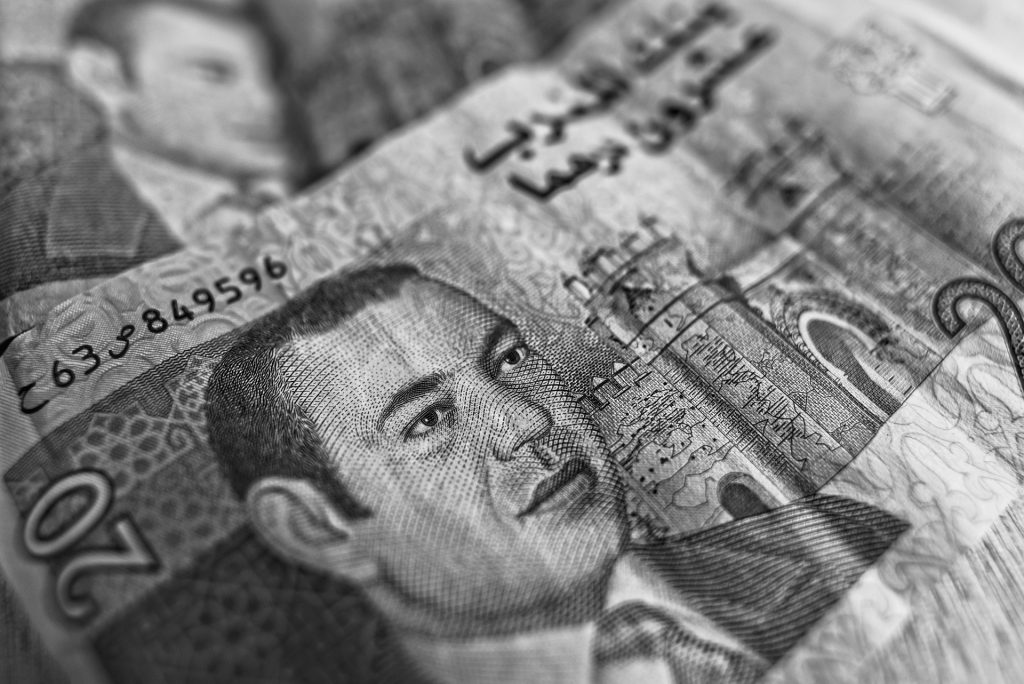
With the Moroccan Dirham (MAD – Dh) as the country’s official currency, any withdrawal using a UK bank card might incur in the payment of several different fees. Besides the percentual fee referring to the currency conversion, some UK banks may also charge a flat commission for withdrawals made outside the UK. In some instances, you may well end up paying 5%-6% of your original withdrawal in banking fees.
On the other hand, exchanging money before your trip is not a viable solution either. Besides not being any cheaper, it’s also not safe or wise to carry so much money on you during your trip. As such, we recommend using the services of online banking fintech companies such as Revolut, N26 or Monzo.
Although each have their own limitations and fees, they allow you to withdraw a certain amount in foreign currency without any fees involved. And even after that threshold is reached, costs are much smaller when compared to traditional banks. Keep in mind, though, this does not apply to fees issued by local banks for withdrawals made with foreign cards. Be that as it may, a message will always pop up every time there is a fee per withdrawal, so you will never be caught unaware. Sign up for Revolut for free >> to get 3 months of Premium.
It’s also worth mentioning that cash is still king in Marrakesh, and most shops and restaurants don’t even accept card as payment. That being said, we recommend using Al-Arid Bank, the only bank in Morocco that doesn’t charge any fees for withdrawals using a foreign credit/debit card.
Furthermore, if you prefer to take cash and exchange your money in Morocco, here are three exchange offices we can recommend in Marrakesh:
- Taha Change – district of Gueliz
- Bureau De Change – near the Ben Youssef Madrasa
- Bab Agnaou Change – next to Badi Palace
Marrakesh 3-day travel guide – Common scams and frauds
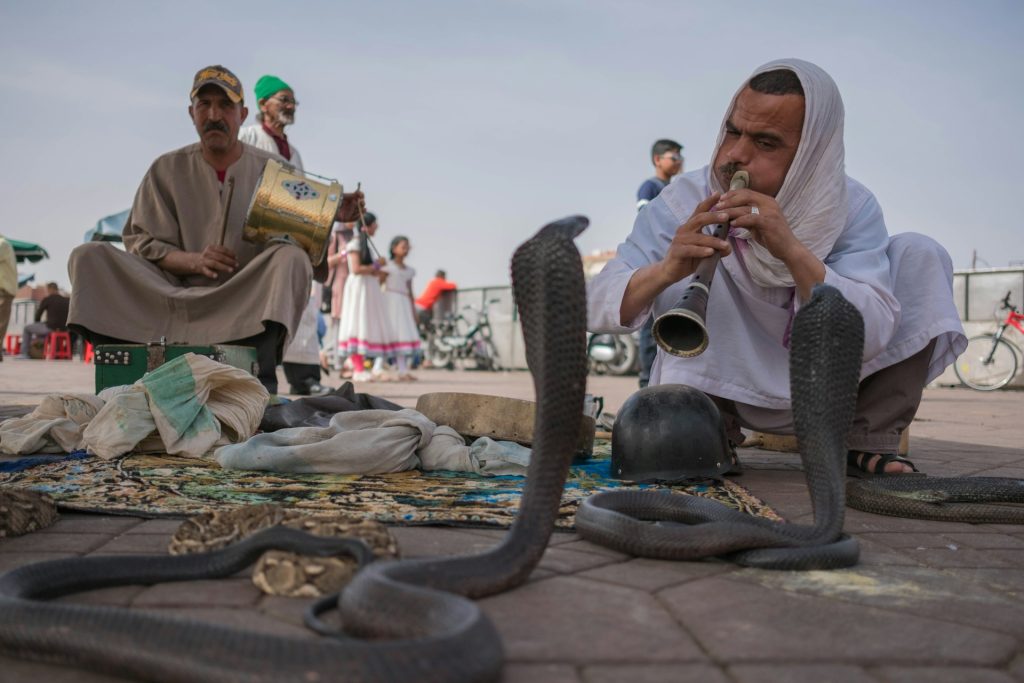
Contrary to popular belief, Marrakesh is actually quite safe. The streets remain lively even at night, and incidents of violent crime or robbery are rare. However, it’s wise to be cautious of pickpockets, particularly inside the Medina. Apart from that, using common sense is key. That means no taxis whose drivers refuse to start the meter, no accepting help from strangers when you’re using an ATM and always keeping an eye out for your stuff when you’re walking through busy areas. To sum up: don’t do anything you wouldn’t feel comfortable doing anywhere else! We also recommend using an anti-theft bag. Unlike regular bags, anti-theft bags are specifically designed to prevent pickpockets and thieves from easily accessing your belongings. PacSafe is one of the leading brands in this category, producing bags that boast lockable zippers, cut-resistant materials and RFID-blocking fabric that helps protect against those trying to steal your credit card information through contactless technology. We currently use the Lunar, Crossbody and Sling models and can personally attest to their high-quality materials – especially the locking zipper technology, which makes it nearly impossible for anyone to open your bag without you noticing.
For women, especially within the historical center, expect some unwelcome attention and light verbal harassment (in the form of comments like “very sexy”). However, things rarely escalate beyond that. In fact, your main source of concern when visiting Marrakesh is the constant scamming. Don’t follow anyone offering to guide you, and firmly decline offers for unwanted services, such as placing a monkey on your shoulder for photos or having a henna tattooed without consent, even if people claim it’s free. While Moroccan touts may be persistent in promoting tours or sales, they’re usually harmless. Keep in mind most people are just trying to make a living while having to survive on criminally low wages. Be polite but firm when rejecting their advances. That, coupled with a few basic Arabic key expressions – such as “no, thank you” (leh, shukran) – is usually enough to curb their enthusiasm and have them move on to the next tourist.

Since we’re talking about aggressive sales techniques, it’s time to share some information about locals souqs/bazaars. If some item caught your eye, be prepared to bargain – it’s part of the experience! Initial prices are ALWAYS absurdly high, so don’t hesitate to counter with a lower offer (it’s usually a funny back-and-forth). When it comes to pricier items, it’s very likely the negotiation will take place over a cup of tea. Be that as it may, it’s always better to know beforehand the average prices for specific articles. To help out with that, you might want to pay a visit to Ensemble Artisanal, a state-owned commercial gallery. Inside this arcade, all products on display are made by local craftsmen and prices are non-negotiable. There are also some private art galleries, but those are a lot more expensive.
Lastly, one final word specifically for couples. While Moroccan law technically prohibits unmarried partners from sharing a room, this rule is rarely enforced on foreigners. Similarly, while homosexuality is illegal in the country, it’s generally tolerated among tourists. When checking-in at the hotels, it’s likely no one will ask any questions. Nonetheless, it’s advisable for all couples (gay or straight) to avoid public displays of affection, as these are highly frowned upon according to local customs.
Where to sleep in Marrakesh – Hotels and Accommodation

If you’re looking out for a place to stay on our Marrakesh 3-day travel guide then we got you covered!
Despite its popularity among tourists, Marrakesh remains a budget destination or the average European visitor. This goes for restaurants and markets, but also for accommodation, with traditional riads offering comfortable rooms at friendly rates.
Meaning “garden” in Arabic, the term “Riad” refers to a guesthouse where rooms are built around a central courtyard adorned with plants and mosaics. On the outside, Marrakesh’s typical houses don’t look like much, with their smooth clay walls. However, once you get inside, you’ll be pleasantly surprised by the colorful decoration and lush gardens, which help provide some respite from the heat and add an extra layer of privacy to residents and guests. Some riads even feature fountains or pools in their courtyards! While there are countless hotels all over town, staying at a riad is an integral of the Marrakesh experience.
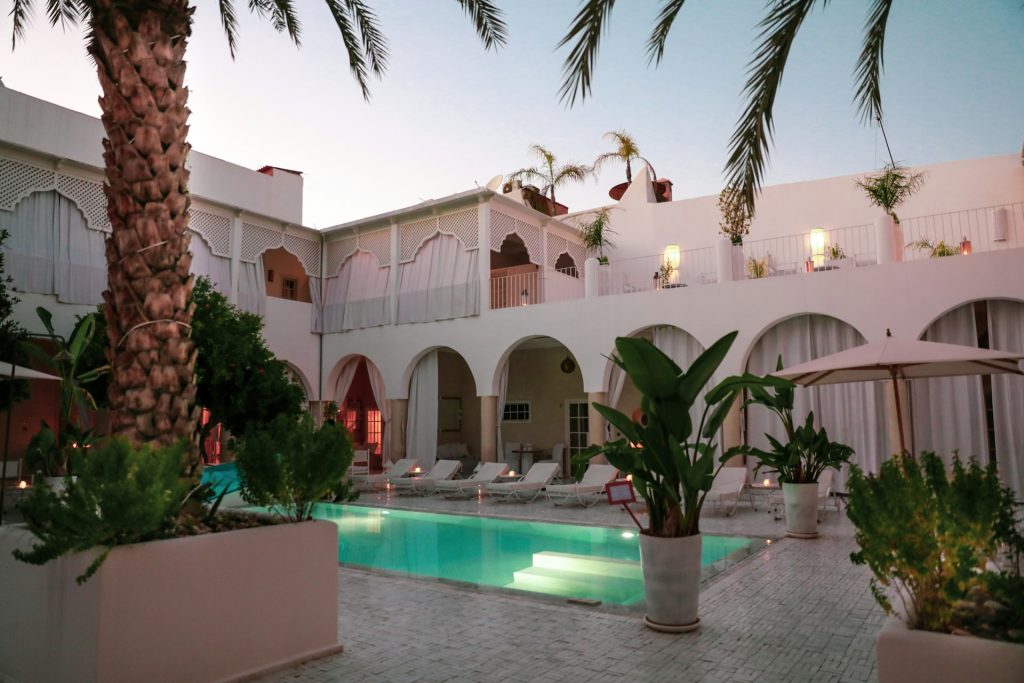
As for the best areas to stay in Marrakesh, the Medina reigns supreme. Make no mistake – this is still one big area – so even if we’re limiting your search range to the walled confines of the historic center, you’ll still need a bit more guidance. Therefore, it’s best to stay close to Jemaa El-Fna, the biggest square in the city. Alternatively, for a more serene setting, away from the bustling souqs, we recommend the district of Gueliz, located outside the Medina. Finally, if you just want the most exclusive experience available and don’t mind staying far away from the city center, nothing beats the resort of Palmeraie, a complex of villas and high-end hotels with every luxury imaginable.
That being said, here are a few hotel options which have passed our value-for-money test:
- Hostel – Hostel Laksour
- € – Riad Granvillier
- €€ – Riad Palais des Princesses
- €€€ – Pestana CR7 Marrakech
Marrakesh 3-Day Travel Guide – Transportation between the Menara Airport and the Medina
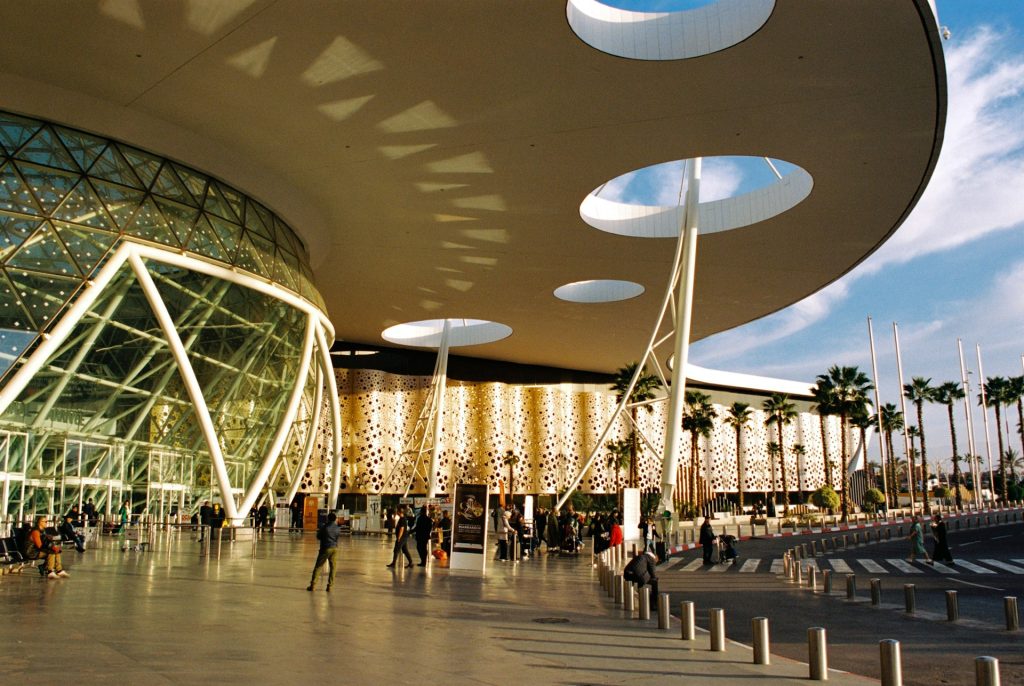
Located less than 8km away from the city center, the best way to travel between Menara Airport and the Medina is aboard bus number 19. The stop is located outside the arrivals’ terminal and the bus operates between 06h30 and 23h00, leaving every 30 minutes. This line links the airport to Jemaa el-Fna, at the heart of the city (passing through Gueliz as well). Tickets cost 30 Dh and can be paid in cash.
Finally, if you happen to land in Marrakesh outside of the bus operating hours, you may always rely on a taxi. While this used to pose a real challenge, considering the overwhelming amount of cab drivers who would approach you and try to trick you into agreeing to tag along for a ridiculous fare, the process is know way easier and fairer. Right outside the terminal, passengers can now find a cab-booking counter and check before-hand the prices for specific city areas. You just need to order the taxi, complete the payment and wait for a driver to be assigned to your journey. While some drivers may still try and ask for more money, do not budge! If you’re heading to the Medina, expect to pay anywhere between 80 and 150 Dh, depending on your exact destination and time of day.
Marrakesh 3-Day Travel Guide – Public transportation
Although Marrakesh isn’t served by any tram or metro system, truth be told travelers will hardly ever need to use any form of public transportation when visiting the city (aside from the bus between the airport and their places of accommodation). Be that as it may, it is a brief overview of how to move around in the Red City.
Buses in Marrakesh

Although old and often overcrowded, local buses are still the only public transportation in Marrakesh. As mentioned above, you’ll hardly need to use them since all of the city’s tourist attractions can easily be explored on foot. However, if you’re staying in Gueliz, we recommend keeping an eye out for line number 1, which connects the district to the Medina, saving you both the time and the effort of having to walk between the two areas. On the other hand, to get to Jardin Majorelle, which is somewhat removed from the other points of interest (though still perfectly walkable), you’ll need to catch lines 12 or 15 from Koutoubia Mosque.
In any case, the local bus system – managed by ALSA (you can check the different routes through the link) – is fully integrated into Google Maps. As for tickets, they cost 4 Dh per journey.
Taxis in Marrakesh

By far the most widely used mode of transportation among visitors and locals alike, taxis are everywhere in Marrakesh. Much like any other destination, though, the tough part is to find an honest cab driver, since it’s highly likely that any driver will try to squeeze a few extra dirhams out of you. It’s a shame, because traveling by taxi can be almost as cheap as taking the bus, especially if you’re not traveling alone.
To address this issue, you can try using a ride-sharing app. Although major international brands like Uber, Lyft or Bolt don’t operate in Marrakesh (not even Careem, which is very popular in the Islamic world), there are some local companies that pay a similar service, such as Roby and Heetch. These apps connect users with local taxi dispatch centers, and although the user can see an estimated fare, payments are made directly to the drivers. Unfortunately, some drivers may try to demand more than the app’s displayed fare, but you can just pay the fair amount and exit the vehicle.
Walking inside the Medina

No, it’s not a mistake. Though it may seem trivial at first to list “walking” as a way to get around the city, given the maze that awaits you inside the Medina, a few tips will come in handy. Firstly, it’s important to note that cars or buses are not permitted inside the ancient walls, with only a few motorcycles, bikes and carriages handling the transportation of people and goods. Luckily, apps like Google Maps and Maps.me are quite reliable, although not all streets may be listed. For a visual landmark, the minaret of the Kutubiya mosque, near Jemaa El-Fna, serves as a useful reference point if you get lost.
Occasionally, locals may also offer directions. While their goal is probably to guide you to your destination, they will surely try to steer you towards specific shops where they can earn a commission. Plus, a tip will be expected at end. If you prefer to move on without being guided along, simply decline politely and proceed on your way.
Marrakesh 3-day Travel Guide – Free walking tours
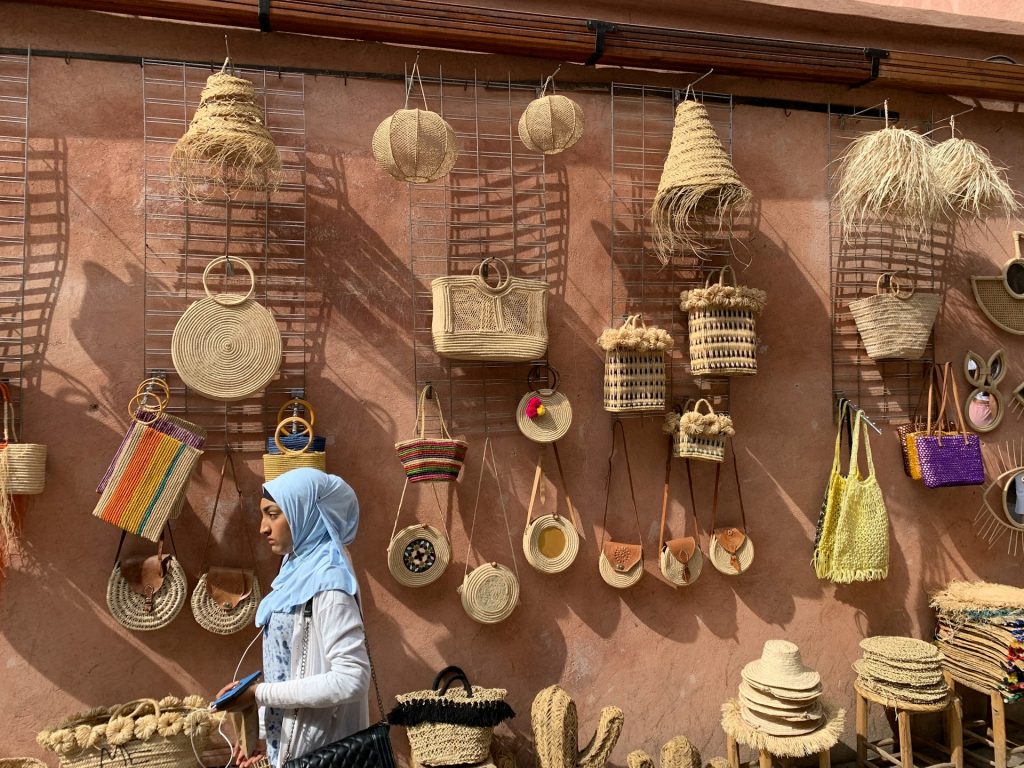
While in Marrakesh, you have the option to explore the city with a free walking tour. These tours, led by local guides or tour companies, offer guided visits to the historic center, sharing intriguing stories about each place and providing valuable cultural context. Even though these tours are technically free, it’s customary to show appreciation for the guide’s efforts by leaving a tip at the end. In Marrakesh, a reasonable minimum tip would be around 50 Dh.
That being said, here are a few companies that run free walking tours in Marrakesh:
Marrakesh 3-day Travel Guide – Hidden Treasures

With 3 days in Marrakesh, and even if you count-out the day you’ll spend visiting the Agafay Desert, you’ll still have enough time to cover the city’s main highlights, while at the same time getting to check some lesser-known places – both in the city center and on the outskirts.
That being said, and because we believe a good traveler must always be able to explore beyond the obvious, we wanted to add a few more obscure places to your list of things to see and do in Marrakesh in 3 days:
Mellah: Historically recognized as Marrakesh’s Jewish quarter, Mellah was once home to a vibrant Semitic community. While now predominantly Muslim, you can still find signs of its Jewish heritage through the architecture and monuments that still honors its past, such as the Lazama Synagogue or the Jewish Cemetery, the largest in Morocco.
Tanneries of Marrakesh: Although Fez’s is widely known for its tanneries, Marrakesh boasts its very own district dedicated to the treatment of leather and animal skins. Unlike Fez, however, Marrakesh’s tanneries aren’t particularly touristy, meaning the experience will be more chaotic, but also more traditional and authentic.
Errachidia Street: Located near the Saadian Tombs, Errachidia Street provides a much-needed respite from the crowded and excessively touristy scene of the Medina. While offering the same traditional architecture and street markets, the atmosphere is notably more subdued, offering visitors a quieter experience.
Le Jardin Secret: True to its name (Secret Garden), this picturesque and quaint green space – located amidst the chaos of the Medina – allows visitors to take a break from the sensory overload of central Marrakesh. Once part of a Saadian palace, the garden underwent massive renovation works and opened to the public in 2016, steadily gaining popularity (though it can still be considered a hidden gem of sorts).
Marrakesh 3-Day Travel Guide – What to See and Do in 72 Hours
Since Marrakesh’ essentials can be visited in just 2 days, I highly recommend taking the remaining 24 hours for a well-deserved day trip to nearby desert. That being said, you’ll get to explore the Medina and its extraordinary souqs, visit the city’s most important palaces, see first-hand the Jemaa El-Fna Square, try out a traditional hammam and stuff your face with insane amounts of tagine and couscous.
Without further ado, here’s what to see and do in Marrakesh in 3 days:
Marrakesh 3-Day Travel Guide – Day 1: The Medina

Just arrived in Marrakesh, your first day in Moroccan soil will be entirely dedicated to exploring the fabulous Medina, the historic walled center where time seems to stand still. Here, where no cars or vans are allowed, buildings are built and coated with red clay, and numerous merchants still set up their stalls along the narrow and dusty, bustling streets. It’s a true microcosm of the commercial and religious traditions of the Maghreb region. However, before diving deep into the organized chaos of the Medina, your day will kick off with a visit to the Tanneries of Marrakesh, one of the city’s best-kept secrets. Although Fez’s is widely known for its tanneries, Marrakesh boasts its very own district dedicated to the treatment of leather and animal skins. Unlike Fez, however, Marrakesh’s tanneries aren’t particularly touristy, meaning the experience will be more chaotic, but also more traditional and authentic. As a final word of notice, keep in mind workers and locals tend to be particularly aggressive around here when it comes to making a few extra dirhams of you. Stay firm and refute any approaches.

When finally entering the inebriating Medina, you’ll start off by visiting the extraordinary Ben Youssef Madrasa (40 Dh), the largest of its kind in the country. In Islam, a madrasa is a school for religious studies, and this one is renowned for its exceptional beauty, with its stunning central courtyard and intricate zellij mosaics and stucco details. Although the entire Medina can be seen as a souq due to its maze-like layout and endless array of shops and stalls, most businesses are concentrated in specific areas, such as the district of Rahba Kedima. While it may seem chaotic at first glance, there is indeed some sort of organization, with different souqs specializing in specific products or services:
- Place Rahba Kedima: spices, herbs and teas;
- Souq Haddadine: metal products (lampshades, tables, etc.);
- Souq Cherratine: leather goods;
- Souq Sebbaghine: skins and textiles;
- Souq Zrabia: carpets, rugs and tapestries;
- Souq Smata: clothing;
- Souq Kchacha: dried fruits and vegetables.

In between, don’t forget to visit the Almoravid Qubba (60 Dh), the oldest monument in Marrakesh, before taking a moment to relax in the Jardin Secret (80 Dh). True to its name (Secret Garden), this picturesque and quaint green space – located amidst the chaos of the Medina – allows visitors to take a break from the sensory overload of central Marrakesh. Once part of a Saadian palace, the garden underwent massive renovation works and opened to the public in 2016, steadily gaining popularity (though it can still be considered a hidden gem of sorts). Next to the garden, we also recommend indulging in a traditional Hammam experience, a staple of Moroccan and North-African culture. Offering heated marble rooms and exfoliation massages with local products, you can find all kinds of Hammams throughout Marrakesh, both local and tourist-oriented. For a more authentic experience, consider visiting Hammam Mouassine, the city’s oldest (entry costs 10 Dh, massages and treatments are extra). After completing your cleansing ritual, ramp up the energy levels and head to the legendary Jemaa El-Fna, one of the city’s greatest attractions and an essential place where to witness the Moroccan way of life. Whether day or night, the square is constantly buzzing with traditional music, street vendors and motorbikes. For a panoramic view, enjoy a mint tea on the terrace of Café Glacier, taking in the mesmerizing atmosphere around you. Finally, end your day with a visit to the Koutoubia Mosque, whose minaret marks the highest point in the entire Medina. While non-Muslims can’t enter the mosque, a stroll through its gardens is enough to enjoy the building’s architecture.

First day wrap-up:
- Tanneries of Marrakesh
- Medina
- Ben Youssef Madrasa
- Souqs of Marrakesh
- Almoravid Qubba
- Jardin Secret
- Hammam Mouassine (traditional baths)
- Jemaa El-Fna
- Koutoubia Mosque
Where to eat in Marrakesh – Cheap restaurants inside the Medina:
- Snack Toubkal (Moroccan traditional)
- Café Des Épices (Moroccan traditional)
- Atay Café (Moroccan traditional)
- Henna Art Café (Moroccan traditional)
- Cuisine De Terroir (Moroccan traditional)
- Dabachi Chez Cherif (Moroccan traditional)
- Cafe Babouche (varied)
- L’mdina Marrakech (varied)
- Broc The Kasbah (vegetarian)
- Snack Bachar (sandwiches with meat, veggies and offal)
Marrakesh 3-Day Travel Guide – Day 2: Palaces, Tombs and the Majorelle Gardens

Now that you’ve explored the Medina, your second day in Marrakesh will be spent discovering the city’s other attractions, with a focus on the palaces and remnants of the Saadian Sultanate, the powerful dynasty that ruled over Moroccan territory during the 16th and 17th centuries. However, to start your morning in a more relaxed tone, we recommend a quick stroll along Errachidia Street. Located near the Saadian Tombs, this thoroughfare provides a much-needed respite from the crowded and excessively touristy scene of the Medina. While offering the same traditional architecture and street markets, the atmosphere is notably more subdued, offering visitors a quieter experience. And since we mentioned the Saadian Tombs (70 Dh), a necropolis where many of Morocco’s historical monarchs are buried, this will be your next stop! Comprising several burial halls, with the sumptuous Chamber of the Twelve Columns as the highlight, this historical site is yet great another example of traditional Moroccan interior architecture. A bit further north, it’s also worth visiting the Badi Palace (70 Dh), which are actually the ruins of an ancient royal residence, before venturing into the district of Mellah. Historically recognized as Marrakesh’s Jewish quarter, Mellah was once home to a vibrant Semitic community. While now predominantly Muslim, you can still find signs of its Jewish heritage through the architecture and monuments that still honors its past, such as the Lazama Synagogue or the Jewish Cemetery, the largest in Morocco.

When it comes to palaces, and although Marrakesh offers plenty of options, the most impressive of the bunch is definitely Bahia Palace (70 Dh). Built in the 19th century to serve as the opulent residence of Si Musa, the grand vizier of the sultan and the highest position in the country’s government, the residence was subsequently expanded and improved, boasting some of the best examples of art made with colorful mosaics forming intricate geometric patterns. Just a few minutes away, we also suggest a visit to Dar Si Said (30 Dh), another imposing mansion, currently functioning as a museum that showcases an interesting collection of Berber art, Moroccan tapestries and traditional doors. Finally, you can catch a bus (explained in the transportation section) or walk about 3 km to reach the famous Majorelle Gardens (155 Dh), where your day will come to an end. Located outside the historic center, the gardens served as a retreat for the French high-fashion designer Yves Saint Laurent and his partner Pierre Bergé, and are famous for their exotic trees, cacti and vibrant colors. Please note that is mandatory to buy your tickets online, as there is no option to do so in person. Along with the gardens, you can also purchase a combo ticket (315 Dh) and visit the two on-site museums: the Yves Saint-Laurent Museum and the Pierre Bergé Berber Art Museum.

Second day wrap-up:
- Errachidia Street
- Saadian Tombs
- Badi Palace
- Mellah Quarter
- Lazama Synagogue
- Jewish Cemetery
- Bahia Palace
- Dar Si Said
- Majorelle Gardens (combo w/ Yves Saint-Laurent Museum e o Pierre Bergé Berber Art Museum)
Where to eat in Marrakesh – Cheap restaurants in Kasbah, Mellah e Gueliz:
- Amal Women’s Training Center (Moroccan traditional)
- Café Restaurant Dar L’hssira (Moroccan traditional)
- Mazel Café (Moroccan traditional)
- Malah Café & Restaurant (Moroccan traditional)
- La table de Marrakech (Moroccan traditional)
- Black Chich (African food)
- Le Petit Thai (Thai)
- Mario e Luigi (Italian)
- Medina Burger (hamburgers)
Marrakesh 3-Day Travel Guide – Day 3: Day Trip to the Agafay Desert

A “must” for anyone visiting Morocco, spending a day (or night) in the desert is the highlight of any trip to the country. Since the dunes of Erg Chebi and the deserts of Zagora and Chigaga are too far from Marrakesh for a feasible day trip, most visitors stick to the Agafay Desert, just 35 km away from the Red City. For us, this is actually the perfect way to bid farewell to the country!
While many travelers specifically aim to spend the night under the famous starry desert sky, most settle for a good day trip due to time or budget constraints. Although there are various tour options available, most include activities like quad biking in the dunes, camel rides, dinners with traditional entertainment/dances, and a brief stargazing session, offering a quick taste of the traditional desert experience. This is a typical tour departing from Marrakesh. Alternatively, if you’re keen on staying overnight in Agafay, Berber camps usually offer transportation services that will pick you up from your accommodation in Marrakesh – just ask them about prices and availability. You can also consider hiring a 4×4 taxi in the city and negotiating a price for a trip to the desert. However, be prepared to pay around 300 Dh for the one-way trip (excluding the return or any waiting time).

Third day wrap-up:
- Agafay Desert
Got more than 3 days in Marrakesh? Then you might want to check out the best day trips from the city:
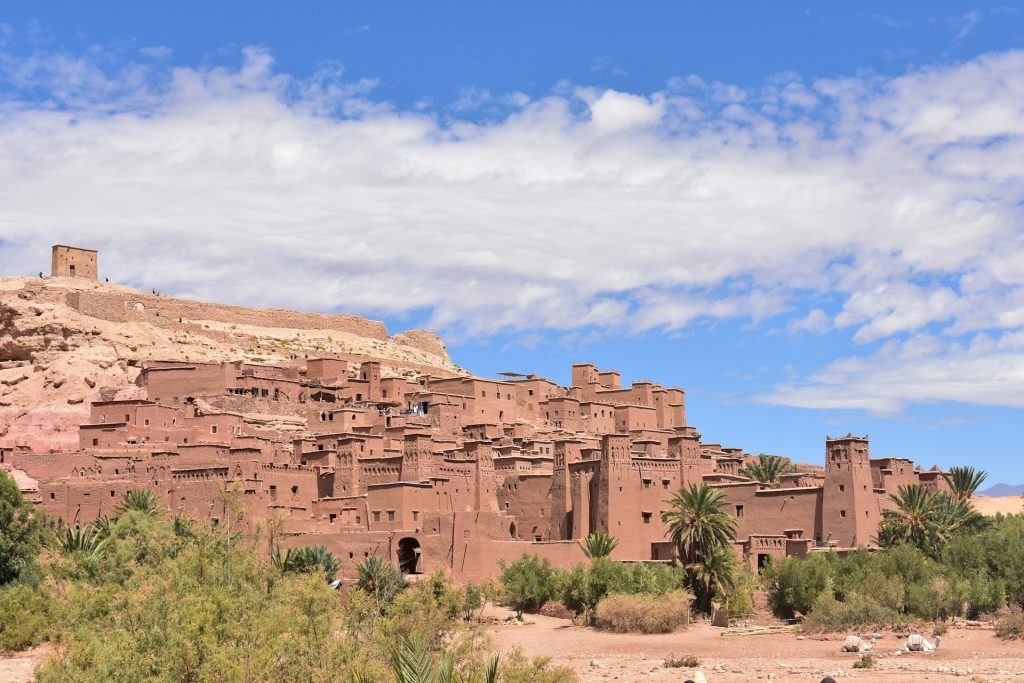
- Ourika Valley: For a taste of the Atlas Mountains, there’s nothing better than a scenic road trip through the charming villages of the Ourika Valley. While the markets of Tnine, Aghbalou and Asni are all quite interesting, the true highlight is the walking trail to the Ourika Waterfalls, whose starting point is located in the picturesque village of Setti-Fatma.
- Essaouira: Arguably Morocco’s most popular coastal city – though the wind and the strong currents make it a not-so-typical beach destination – Essaouira (also known as Mogador) boasts a remarkably beautiful historic center, with a Medina that is encircled by ancient walls by the sea.
- Aït-Ben-Haddou: Nestled amidst the majestic peaks of the High Atlas, this fortified village (referred to locally as a “ksar”) is famed for its distinguished red clay high-rise buildings. An extremely popular filming location for period dramas, due do its old-world architecture, it stands as one of the nation’s most iconic sites.
- Ouzoud Waterfalls: Morocco’s tallest cascades, standing at an impressive 110 meters, these falls are one of the most well-known day trips from Marrakesh. Hidden away within the Oued el-Abid Gorge, this is a great place for swimming and to catch a break from the desert’s intense heat.
Traveling soon? Get your Holafly eSIM with a 5% discount for unlimited internet access in any destination. No more worrying about roaming charges or finding local SIM cards. Enjoy unlimited data and stay connected with ease. Order your Holafly eSIM now »
Heymondo offers a wide range of travel assistance insurance policies. They combine the best quality, service and price with various levels of coverage, so you’re covered on your weekend getaways and long trips. Click here to get 5% off on your travel insurance »


